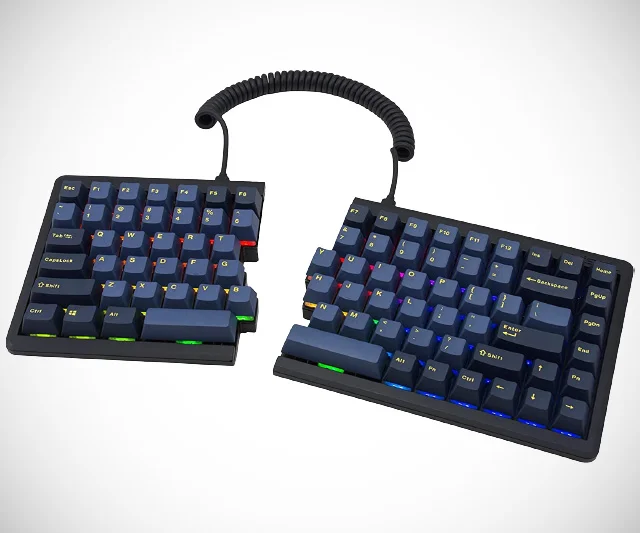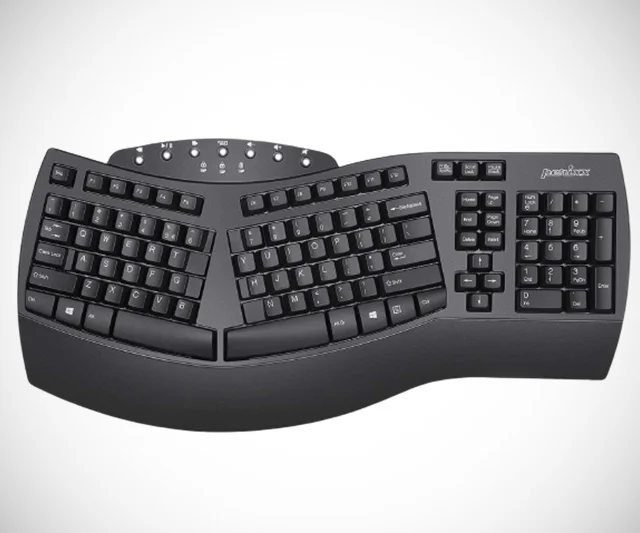What is importance of keyboard ergonomics?
In today’s digital world, most of us spend a significant amount of time typing on a keyboard. Whether for work or personal use, mastering keyboard ergonomics is essential for maintaining health and comfort while also increasing productivity. This article will discuss “How to Master Keyboard Ergonomics and Boost Your Productivity” and the various aspects involved in achieving this goal.
How ergonomics can boost productivity?
By optimizing your keyboard setup and typing technique, you can prevent discomfort and injury, making typing more enjoyable and efficient. This article will provide tips and tricks for improving your keyboard ergonomics and ultimately boosting your productivity.
Understanding Keyboard Ergonomics
What is the Definition of keyboard ergonomics?
Keyboard ergonomics refers to the design and arrangement of a keyboard to minimize strain and discomfort while typing. This involves selecting the right keyboard, proper placement, and using effective typing techniques.
How ergonomics impacts typing?
Ergonomics plays a crucial role in typing efficiency and comfort. Poor ergonomics can lead to strain, discomfort, and even injury, while proper ergonomics can help prevent these issues and make typing more enjoyable and productive.
Identifying the Right Ergonomic Keyboard
Split keyboards
Split keyboards are designed to reduce wrist strain by allowing the hands to maintain a more natural position while typing. These keyboards can be a great solution for those experiencing discomfort or pain when using a traditional keyboard.
RGB Wired + Wireless Bluetooth TKL Split Mechanical Keyboard

Curved keyboards
Curved keyboards, also known as contoured keyboards, feature a slightly curved layout to promote a more natural hand position. This design can help reduce strain and discomfort associated with long periods of typing.
Curved Ergonomic Keyboard

Adjustable keyboards
Adjustable keyboards offer customizable features, such as adjustable height or tenting, to provide a more personalized typing experience. These keyboards allow users to tailor their setup to meet their specific ergonomic needs and preferences.

What is the Proper Keyboard Placement and Angle?
Ideal desk height
The optimal desk height for ergonomic typing is when your elbows are bent at a 90-degree angle while your forearms are parallel to the ground. This positioning helps maintain a neutral posture and reduces the risk of strain and discomfort.
Appropriate keyboard angle
The ideal keyboard angle depends on individual preferences and typing styles. Generally, a slight negative tilt (with the front of the keyboard lower than the back) is recommended to promote a neutral wrist position while typing. Experiment with various angles to find the most comfortable position for you.
Wrist Position and Support
Neutral wrist position
Maintaining a neutral wrist position while typing is essential for preventing strain and injury. This means keeping your wrists straight and avoiding bending them upwards, downwards, or to the sides.
Use of wrist rests
Wrist rests can provide support and help maintain a neutral wrist position while typing. However, they should be used sparingly and not as a place to rest your wrists while actively typing. Instead, use them during breaks to alleviate pressure on your wrists.
Typing Techniques for Ergonomic Typing
Home row technique
The home row technique involves placing your fingers on the middle row of the keyboard, known as the home row. This method allows your fingers to reach all keys efficiently and reduces the need for excessive hand and wrist movement.
Proper finger placement
Using the correct fingers to press each key can help maintain a neutral wrist position and prevent strain. Each finger is responsible for specific keys, and by adhering to this system, you can type more efficiently and comfortably.
Taking Breaks and Stretching
The importance of breaks
Taking regular breaks while typing is essential for preventing strain and injury. Frequent short breaks can help reduce muscle fatigue and improve overall productivity.
Stretching exercises for typists
Incorporating stretching exercises into your breaks can help alleviate muscle tension and maintain flexibility. Focus on stretches that target the fingers, wrists, and forearms to promote healthy typing habits.
Software Solutions for Ergonomic Typing
Typing software
Typing software can help improve your typing speed and accuracy, leading to more efficient and ergonomic typing. Programs like these often include training exercises and progress tracking to help you refine your technique.
Break reminder tools
Break reminder tools are applications designed to prompt users to take breaks at regular intervals. These tools can help ensure you take sufficient breaks, reducing the risk of strain and injury associated with extended typing sessions.
Evaluating Your Progress
Monitoring typing speed and accuracy
Tracking your typing speed and accuracy can help you gauge your progress in mastering keyboard ergonomics. Regular evaluations can help identify areas for improvement and ensure you are on track to achieve your productivity goals.
Identifying areas for improvement
By monitoring your progress, you can pinpoint specific aspects of your typing technique that may require further refinement. This allows you to focus on improving those areas and ultimately boosting your overall productivity.
The Benefits of mastering keyboard ergonomics
Mastering keyboard ergonomics can lead to increased comfort, reduced strain, and improved productivity. By following the tips and techniques discussed in this article, you can optimize your typing experience and enjoy the many benefits of ergonomic typing.
Now that you have a solid understanding of “How to Master Keyboard Ergonomics and Boost Your Productivity,” it’s time to put these techniques into practice. Continually evaluate your progress and make adjustments as needed to ensure you’re maximizing both comfort and productivity while typing.
FAQs
What is keyboard ergonomics?
Keyboard ergonomics refers to the design and arrangement of a keyboard to minimize strain and discomfort while typing. This involves selecting the right keyboard, proper placement, and using effective typing techniques.
How does proper keyboard ergonomics improve productivity?
By optimizing your keyboard setup and typing technique, you can prevent discomfort and injury, making typing more enjoyable and efficient. This can lead to increased productivity and better overall performance in your work or personal tasks.
What types of ergonomic keyboards are available?
There are several types of ergonomic keyboards, including split keyboards, curved keyboards, and adjustable keyboards. These designs aim to provide a more comfortable and natural typing experience, reducing strain and discomfort.
How often should I take breaks while typing?
It is recommended to take frequent short breaks while typing. A general guideline is to take a 5-minute break every 30 minutes or a 10-minute break every hour. Adjust your break schedule to meet your specific needs and comfort level.
What are some simple stretches I can do during typing breaks?
During typing breaks, focus on stretches that target the fingers, wrists, and forearms. Simple exercises include wrist circles, finger stretches, and forearm stretches. These can help alleviate muscle tension and maintain flexibility.
Now that we have covered the various aspects of mastering keyboard ergonomics and boosting productivity, it is important to remember that the journey towards better ergonomics and improved productivity is an ongoing process. Continuously evaluate your typing habits, keyboard setup, and typing techniques to ensure you are making the most of your ergonomic typing experience.
Additional Tips for Mastering Keyboard Ergonomics
Experiment with different keyboard layouts
There are various keyboard layouts available, such as QWERTY, Dvorak, and Colemak. Experimenting with alternative layouts may lead to increased typing efficiency and comfort, depending on your individual preferences.
Keep your workspace clutter-free
A clean and organized workspace can help reduce distractions and promote better focus while typing. Ensure your desk has sufficient space for your keyboard, mouse, and any other necessary peripherals.
Adjust your chair and monitor height
Proper chair and monitor height are crucial components of an ergonomic workspace. Your chair should provide adequate lumbar support, and your monitor should be positioned at eye level to reduce neck strain.
Maintain good posture while typing
Good posture is essential for preventing strain and injury while typing. Sit up straight with your feet flat on the floor and your shoulders relaxed to promote a comfortable and healthy typing experience.
Seek professional advice if necessary
If you are experiencing persistent discomfort or pain while typing, consult a medical professional or ergonomics specialist. They can provide personalized recommendations and guidance to improve your typing experience and overall health.
In conclusion, mastering keyboard ergonomics and boosting productivity is an ongoing process that requires commitment and attention to detail. By implementing the techniques and tips outlined in this article, you can work towards a healthier, more comfortable, and productive typing experience. Remember to continuously evaluate your progress and make adjustments as necessary to ensure you are making the most of your ergonomic typing journey.

